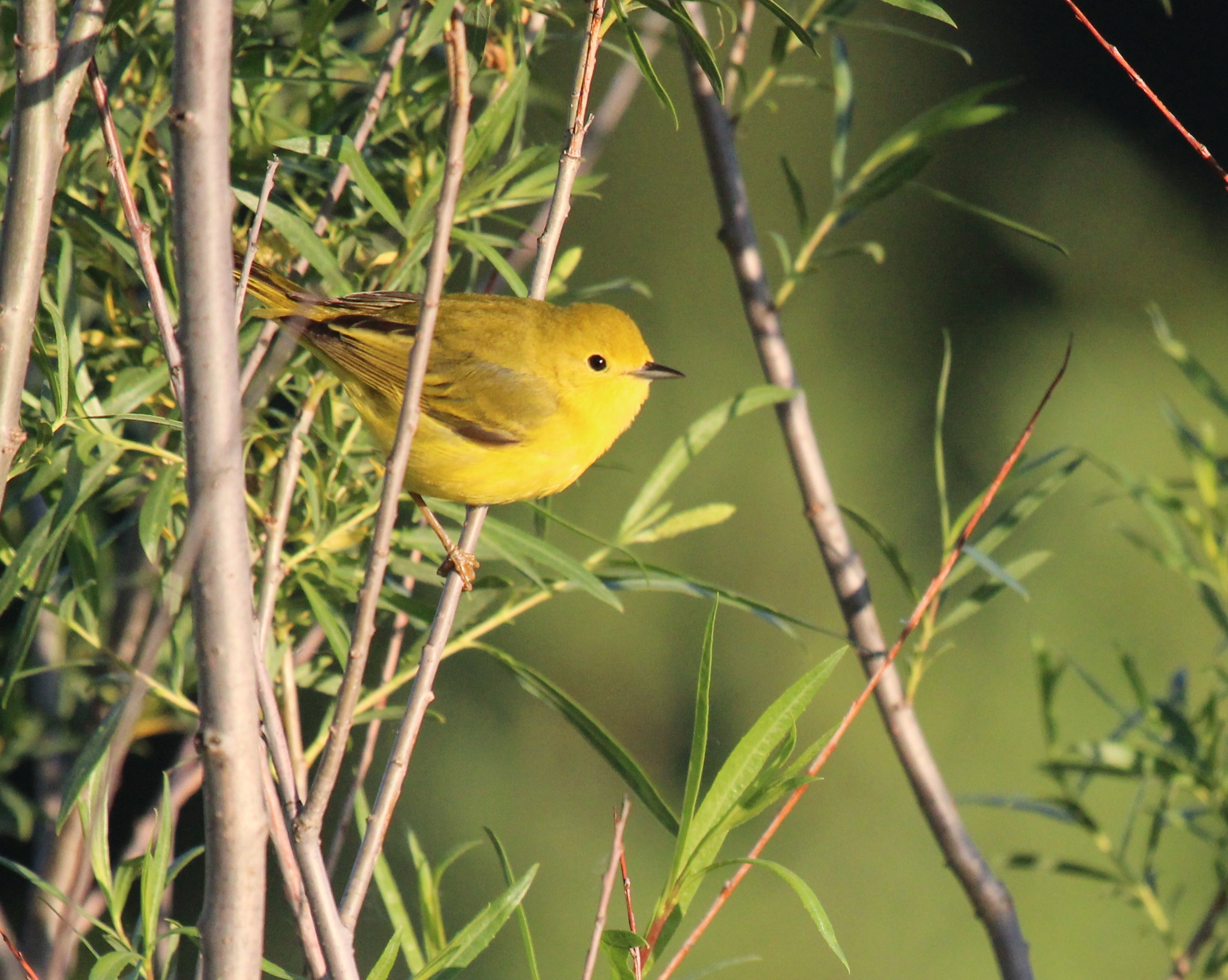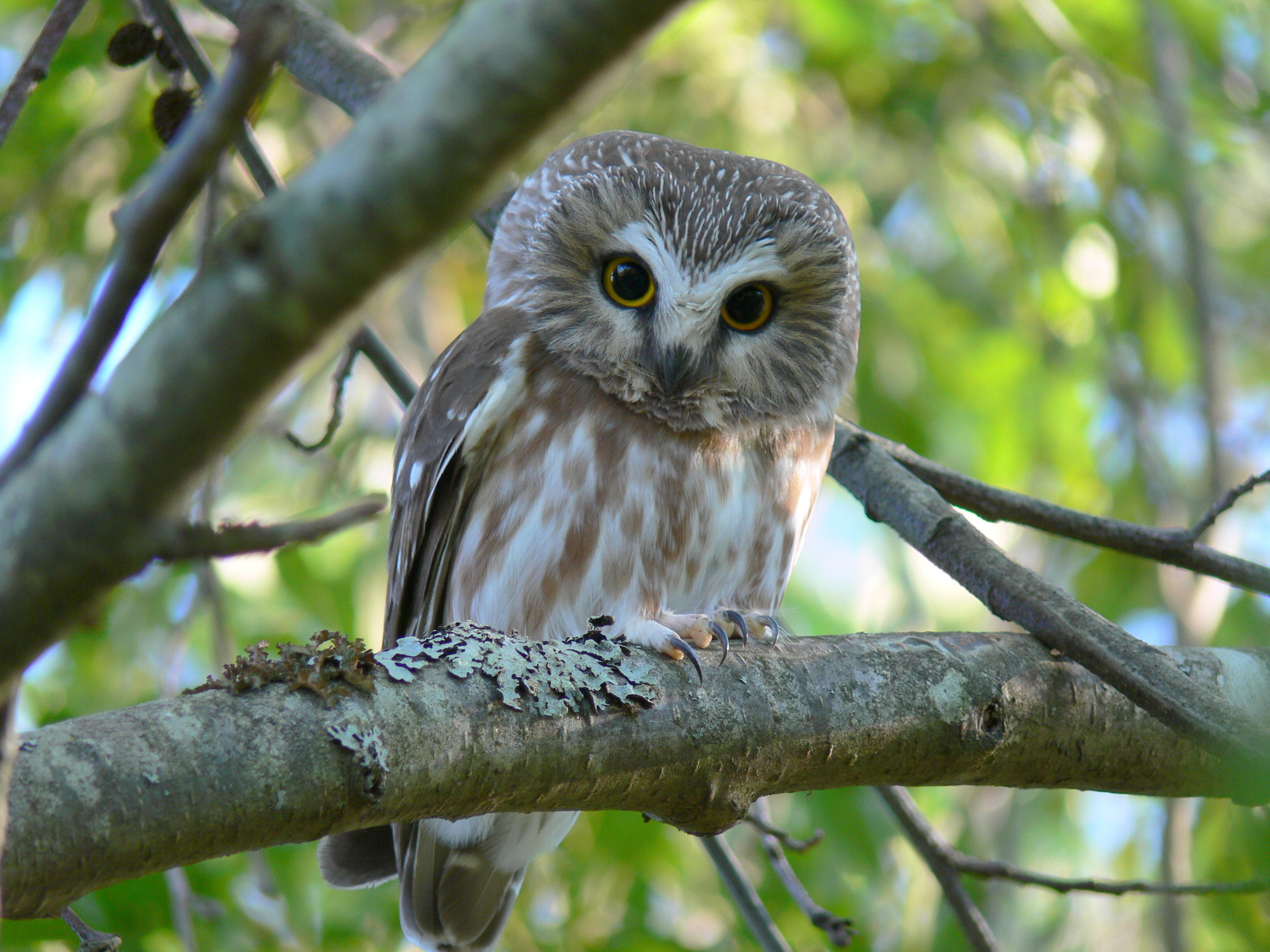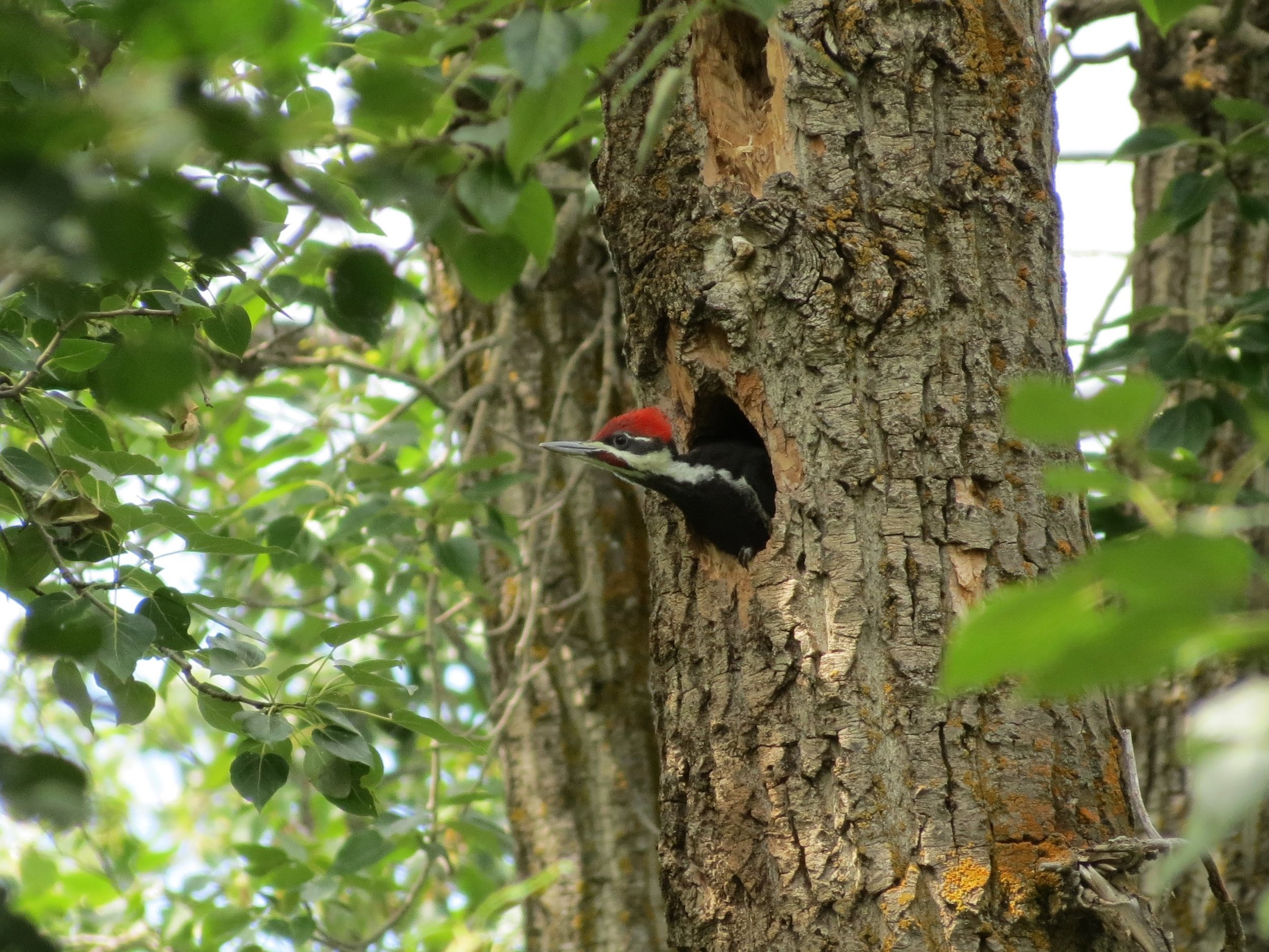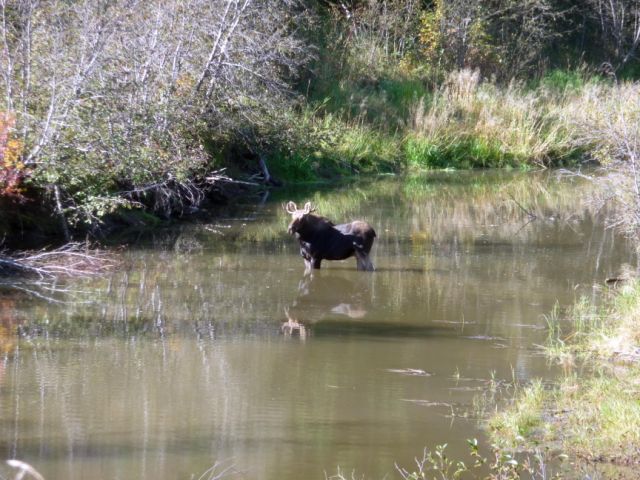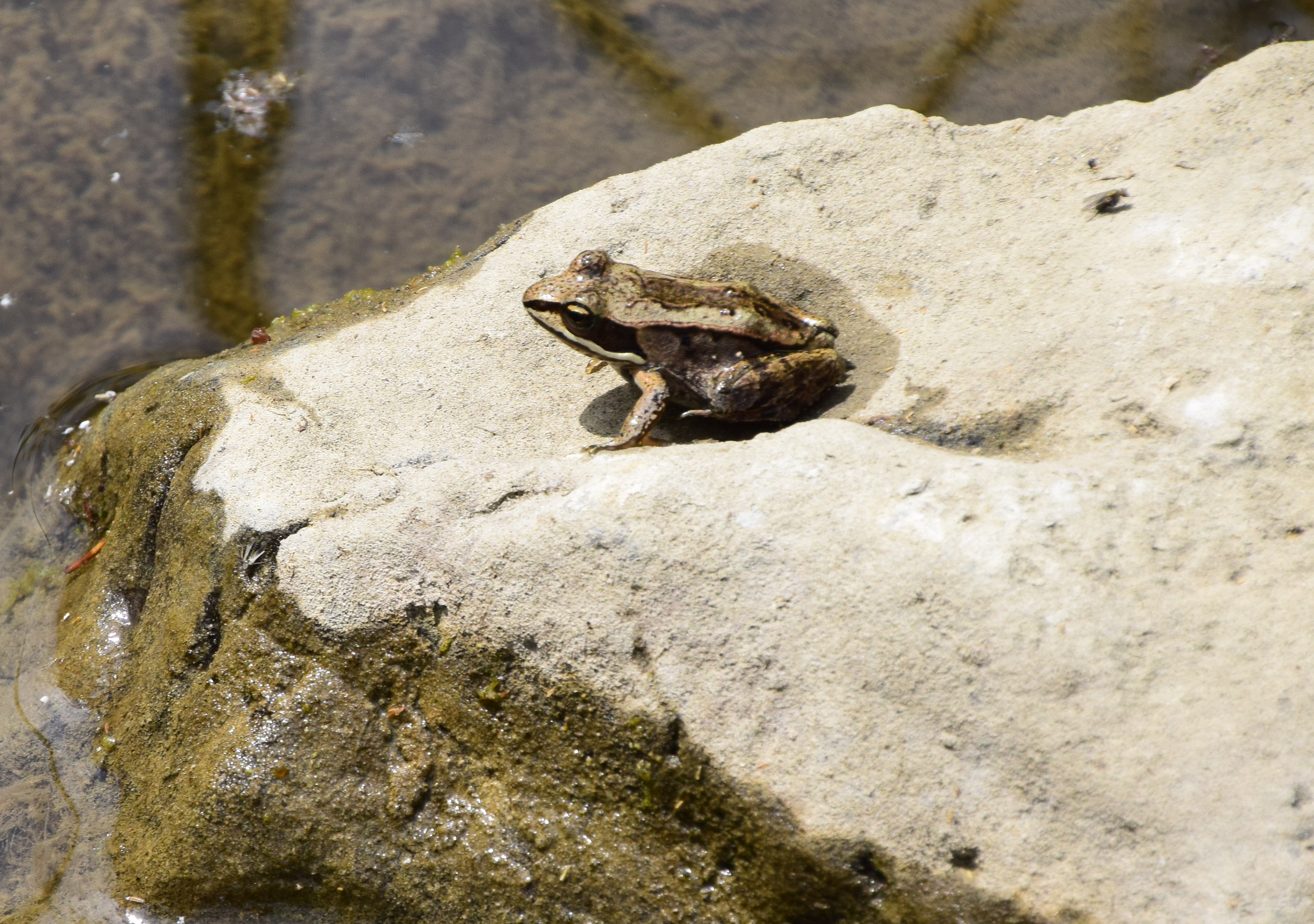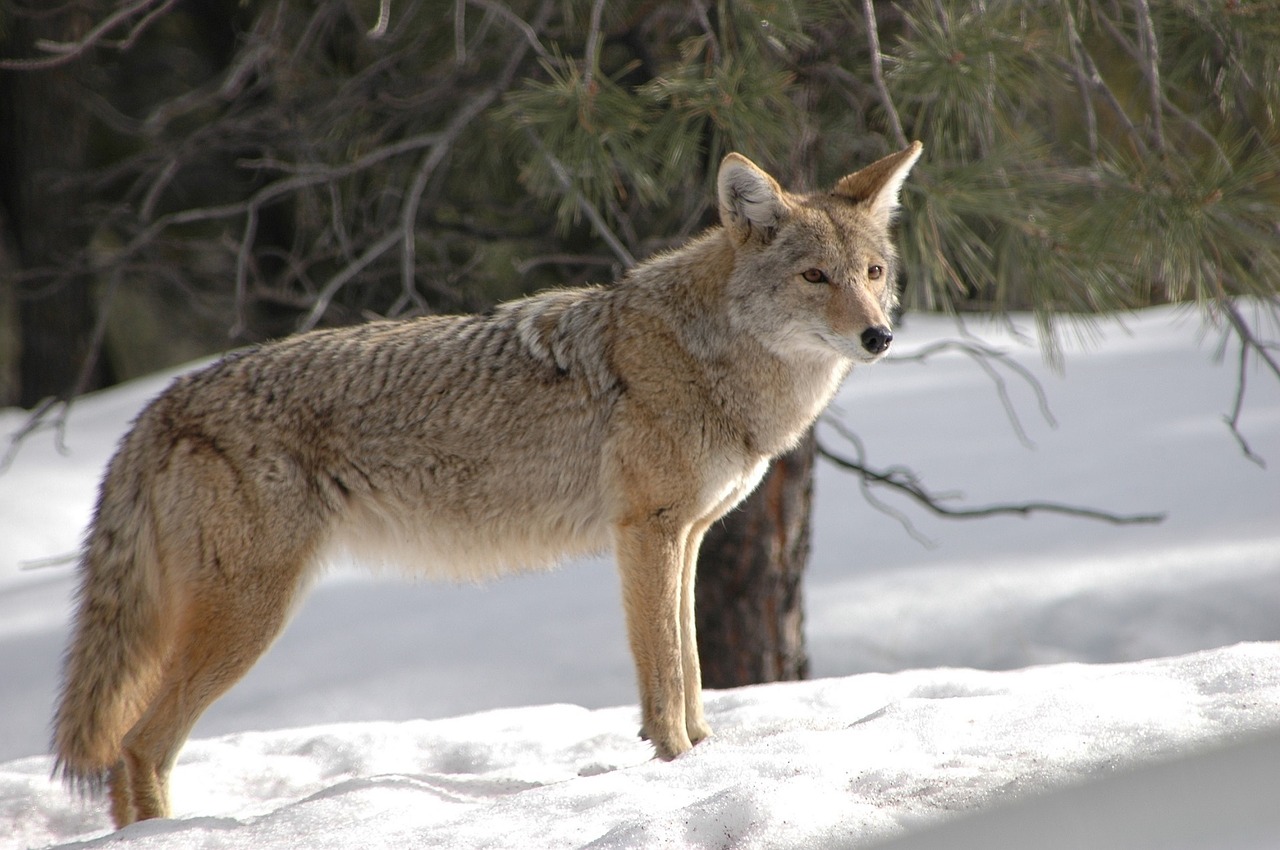Many Habitats Support Many Inhabitants
Larch Sanctuary features a wealth of habitats, formed by differences in slope, elevation, aspect, moisture, soil and the amount of sunlight penetrating the upper canopy of the forest.
Six different vegetation communities provide either a temporary or permanent home to over 90 species of birds, as well as animals such as moose, white-tailed deer, fox, snowshoe hares and frogs.
A Great Destination for Birdwatching
Over 90 species of birds frequent Larch Sanctuary, including 40 species that nest and breed here. The most commonly observed are Black-capped Chickadees, American Robins, House Wrens, and Red-eyed Vireos. Yellow Warblers, Mallards, American Crows, Chipping Sparrows, White-throated Sparrows, Brown-headed Cowbirds, Yellow-Rumped Warblers and Cedar Waxwings are also commonly seen or heard.
The diversity of Larch Sanctuary provides for a place for waterfowl in both flowing and still water. Common Mergansers, Common Goldeneye, Bufflehead, Mallard, Gadwall, and Teal have been spotted breeding and brood-rearing. Swainson’s Hawk and Red-tailed Hawk have been observed, as several species of owl, including Northern Saw-whet Owl, Barred Owl, Great Horned Owl, and Long-eared Owl.
Open and save the Sancutary Bird Guide to learn a bit about the species who tend to use Larch Sanctuary and adjacent areas for nesting or feeding.
Alive with Creatures Large and Small
Muddy summer days and snowy winter days are an ideal time to discover the animals that travel through the Sanctuary. Tracks of White-tailed Deer are most common, along with Snowshoe Hares and two very small mammals: Meadow Voles and White-footed Deer Mice. Moose tracks can also be found, and occasionally, tracks of Black Bear.
Animals leave other signs of their presence. For example, moose leave scat. Snowshoe hares “ring-bark” the vegetation they eat. Deer browse on the Sanctuary’s red osier-dogwood and leave broken twigs as signs of their dinner. During the winter you may see evidence of them “cratering” – digging down through the snow to get at buried food – near the edge of the ravine.
Signs of red squirrel are evident both by tracks and remains of spruce cones near clumps of mature spruce trees. Several beaver dams and beaver cuttings indicated presence of these species. Beaver dams provide lentic (still or slow moving water) habitat for bird and amphibian species that may not use the lotic (flowing water) portions of Whitemud Creek.

